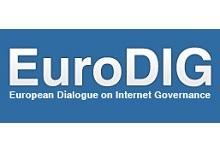5G user perspective and implementation
30 Jun 2021 12:45h - 13:45h
Event report
The workshop explored, from various perspectives, the opportunities and challenges of 5G deployment.
5G transcended the promise of enhanced connectivity, and that the impact the technology might have on individuals must be looked into, pointed out Ms Louise Marie Hurel (PhD Researcher, London School of Economics and Political Science), the session moderator.
5G implementation in the EU
Without ubiquitous connectivity Europe will not reach the digital decade objectives announced by the Commission, including the 5G coverage for all populated areas, including rural ones. ‘5G has to be one of the key European assets in the race to digital leadership. Europe has got the know-how, we’re leaders in the mobile networking infrastructure technology. But now we must commit to make the bold investments that translate this know-how into a competitive high-quality network deployed all over Europe’, stated Mr Achilleas Kemos (Policy Officer, European Commission, Future Connectivity Systems).
According to Ms Amelia Andersdotter (Director of Strategic Initiatives at CENTR) a critical challenge for 5G deployment is that the telecommunications’ infrastructure is still quite national. ‘Europe is still 27 isolated markets that all have their own spectrum policy, content management strategies and obligations on web services. It is not easy to create a regional cohesion to inspire loyalty with our national or regional level champions’.
Security frameworks for equipment present another problem. Telecommunication operators, for instance, are not allowed to buy insecure equipment and deploy it on public networks, as they are neither allowed to buy insecure services for the end users. There are, however, experiments with spectrum auction strategies which would enable localised deployment on private and industrial networks.
Ericson’s 5G human rights assessment
Mr Théo Jaekel (Legal Counsel and Business and Human Rights expert at Ericsson) spoke of the study on 5G human rights assessment conducted by Ericsson. They took the vendor perspective in order to identify the potential risks and impacts across the value chain and see which actions the company could take, but also to identify where there is a need for industry collaboration, and how to move ahead in addressing some of the impacted areas. Those included: sourcing of the minerals and metals that are going to be used in 5G products, jobs and occupation, health, safety, and surveillance.
For example, the ubiquitous use of IoT devices created new challenges from the perspective of privacy. Also, another issue is the emergence of new players in the ICT ecosystem. The companies which are creating devices for new types of connectivity might not be used to issues of dealing with privacy, government demands, and other restrictions, which companies such as operators have dealt with for some time now.
Jaekel noted that this study presented a good foundation to have identified those issues because the new ones will surely emerge. ‘We will have to continue to work across the industry and with other stakeholders to continue to address these issues. We have done our work from a vendor perspective. We want to also incentivise others to think about these impact areas and risks from their perspectives.’
5G impact on human health
Ms Fiorella Belpoggi (Scientific Director, Istituto Ramazzini) made a presentation on potential 5G impact on human health. She reviewed the available studies focused on the characteristics of the radio frequencies and their carcinogenicity for both animal and human cells, as well as on the reproductive system.
Related topics
Related event

